Over the years, I’ve fallen deeply in love with walking foot quilting. With practice, it’s become meditative for me. I enjoy concentrating on where I’m going and not worrying about speed—my machine does that part of the work for me! While I’m really fond of the process of walking foot quilting, I also appreciate the consistent stitch length that I find is easier to achieve from walking foot quilting than free-motion quilting. For this reason, I suggest to new quilters and those who have been challenged with quilting to give walking foot quilting a try.

While practice is important with any skill, the tools and supplies we use can make a big difference. Years ago, I was really struggling with my walking foot quilting. No matter what I did, my stitches were inconsistent and my quilts were puckering and looking sloppy. After months of frustration, I realized that the issue wasn’t anything I was doing wrong but with my machine. No matter what I did, the walking foot wasn’t working like it should. It was time to break up with my sewing machine.
Choosing a new sewing machine is a big decision. If you ask around, everyone has recommendations on makes and models. Every quilter has slightly different needs based on what type of piecing and quilting they like to do. To make the decision as to what machine I should get, I started by making a list of what features were most important to me in order to make walking foot quilting easier and more enjoyable.
Today I want to share this list with you. Your requirements in a machine might be a bit different than mine, even if walking foot quilting is one of your main activities. If you’re looking into a new machine either now or thinking about it in the future, I hope you’re inspired to start your own “wish list” of features that are most important to you!
1. Large Harp or Throat Space
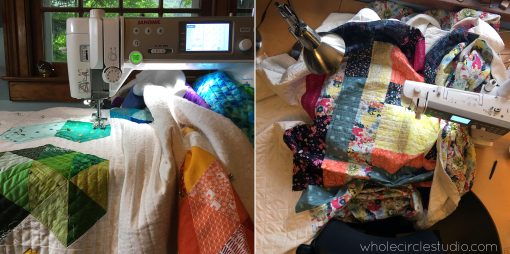
This was THE most important feature for me in a new sewing machine! The harp (or sometimes called throat) space is the area between the needle and the controls on the right hand side of the machine. Essentially it’s all that space you’ll be able to cram your project through while you’re quilting! I enjoy quilting everything from mini quilts to giant king size quilts on my sewing machine, so it is important to me to have the harp space be as big as possible. The harp space on my previous machine was considered fairly large: 8½” x 5¾”. The harp space on my current machine, a Janome 6700P is 10” x 4¾”. While the space is a bit shorter than my previous machine, the extra 1½” in width totally makes up for it! It is much easier to maneuver my larger quilts through this larger harp space.
2. A Walking Foot or Even Feed Foot with Good Visibility
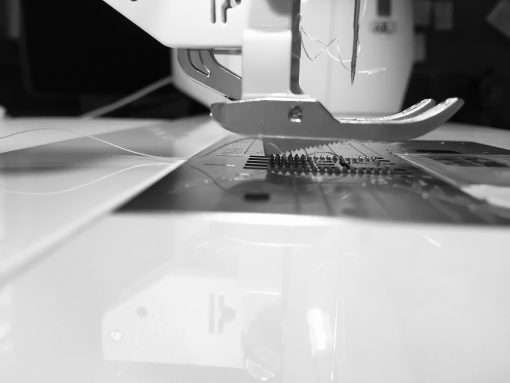
When walking foot quilting, you’ll want to use a walking foot or even feed foot rather than a standard pressing foot (what you normally use to piece quilts). The design of the walking foot or even feed foot allows for all of the layers of your quilt to move through the machine at the same time, making it easier to quilt and giving you better results. Many sewing machines come with a few feet, including a walking foot or even feed foot.
Selecting a machine that had an option for a well-built walking foot or even feed foot was almost as important to me as the large harp space. The walking foot on my previous machine was the main source of inconsistent stitches and puckering. I had looked into alternative feet, but unfortunately for that make/model there weren’t any good solutions.

When looking for a new machine, it was important for the walking foot or even feed foot to not only be reliable, but to allow for good visibility of the needle. This was another issue with my previous machine. The prongs, or toes, on the walking foot were really close together, making it challenging to see where the needle was in relation to seams or other design elements on my quilt top. Having a walking foot or even feed foot with prongs further apart makes it much easier to see the area you’re quilting.
My Janome 6700p came with the AcuFeed Dual Feed Foot. When I take the time to install it correctly, it produces consistent beautiful quilting stitches. I can also attach an adjustable seam guide bar. It’s a great tool that enables me to visually measure and quilt lines without marking my quilts.
3. Large Extension Table
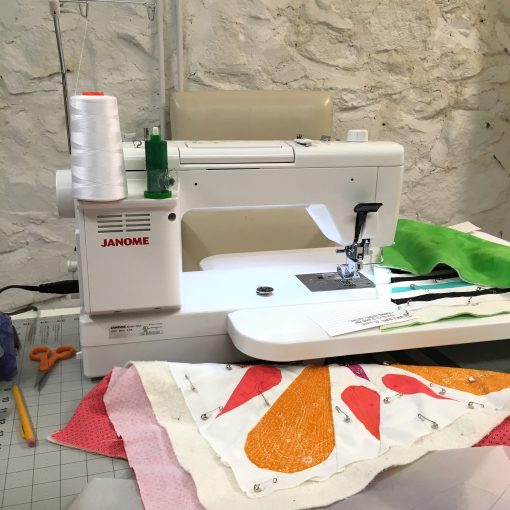
Managing the weight of your quilt is essential for successful quilting. Dropping your sewing machine into your table surface so that the bed of your machine is flush with the top of your table is ideal. However, for most of us that isn’t possible. Having a large extension table with a good amount of space in the front, left side, and behind the machine to support your quilt while working is critical. Some machines, like mine, will come with a large extension table. You can also look for an “after-market” extension table designed specifically for your machine. Since all machines are different sizes, if your machine doesn’t come with one, be sure to confirm it is compatible with your machine.
4. Good Lighting
Since I do much of my quilting at night, working on a machine with built-in bright lighting is important to me. Lighting is one of those things that you don’t realize how important it is until you work in a well lit space. Not only can it help with eye strain, but it just makes the process more enjoyable and allows you to see details and be more precise.

I recommend selecting a machine with multiple sources of lighting. My machine has three lights — one right above the needle, one to the right of the needle and one over the harp. These LED lights located directly above these spaces allow for shadow-free lighting. You can add always extra supplemental lighting, but I find if the lighting isn’t built into the machine, I often get areas that are unevenly lit and shadows.
5. Thread Friendly
I give a fair amount of consideration to the colors of the threads I use to quilt. I like to match or select colors that complement the colors in my quilt top. This strategy allows my quilting to support the design of my quilt top instead of distract from it. Many times to execute this plan, I change out my thread spools and bobbins often throughout a quilt.

For me, it was important to find a machine that had a reliable built-in needle threader. With a touch of a lever, I can easily thread the eye of my needle quickly.

Another thread friendly feature that wasn’t at the top of my list, but was a “it would be nice to have” was a top loading bobbin with a clear cover. On my previous machine, the bobbin was side loading and was hidden by a plastic flap so it wasn’t possible to see how much thread I had on my bobbin. By having the bobbin visible, it’s easier to plan for when the thread in my bobbin will run out — super helpful!
What sewing machine is right for you?
Acquiring a new machine is exciting but also can be a bit stressful. It’s a financial investment and you want to make sure you’re happy with your decision. My advice is to make a list of features that are important to you. Then, research which machines have the features you’re most interested in. Read reviews of those machines. Ask friends about their machines but don’t just ask for general recommendations, ask about the specific features you’re interested in and if they exist and are reliable on the machines that they own. Find a local machine shop or attend a quilt show where you can test out the different features for yourself.

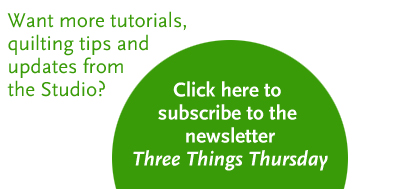

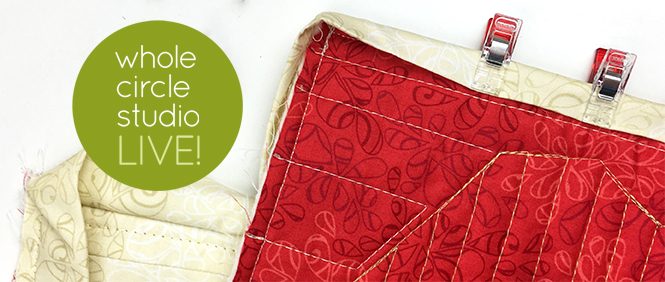

1 Comment
I too just upgraded my quilting sewing machine from a kenmore 385 to. Janome M7! I did it for exactly those reasons you wrote about. I to used my sewing as meditation and escape to a creative world. I’m a beginner quilting have been sewing dresses for my daughter since before she was born. She is 9 now and has a closet full of dresses. She is helping me design a quilt for her bed.